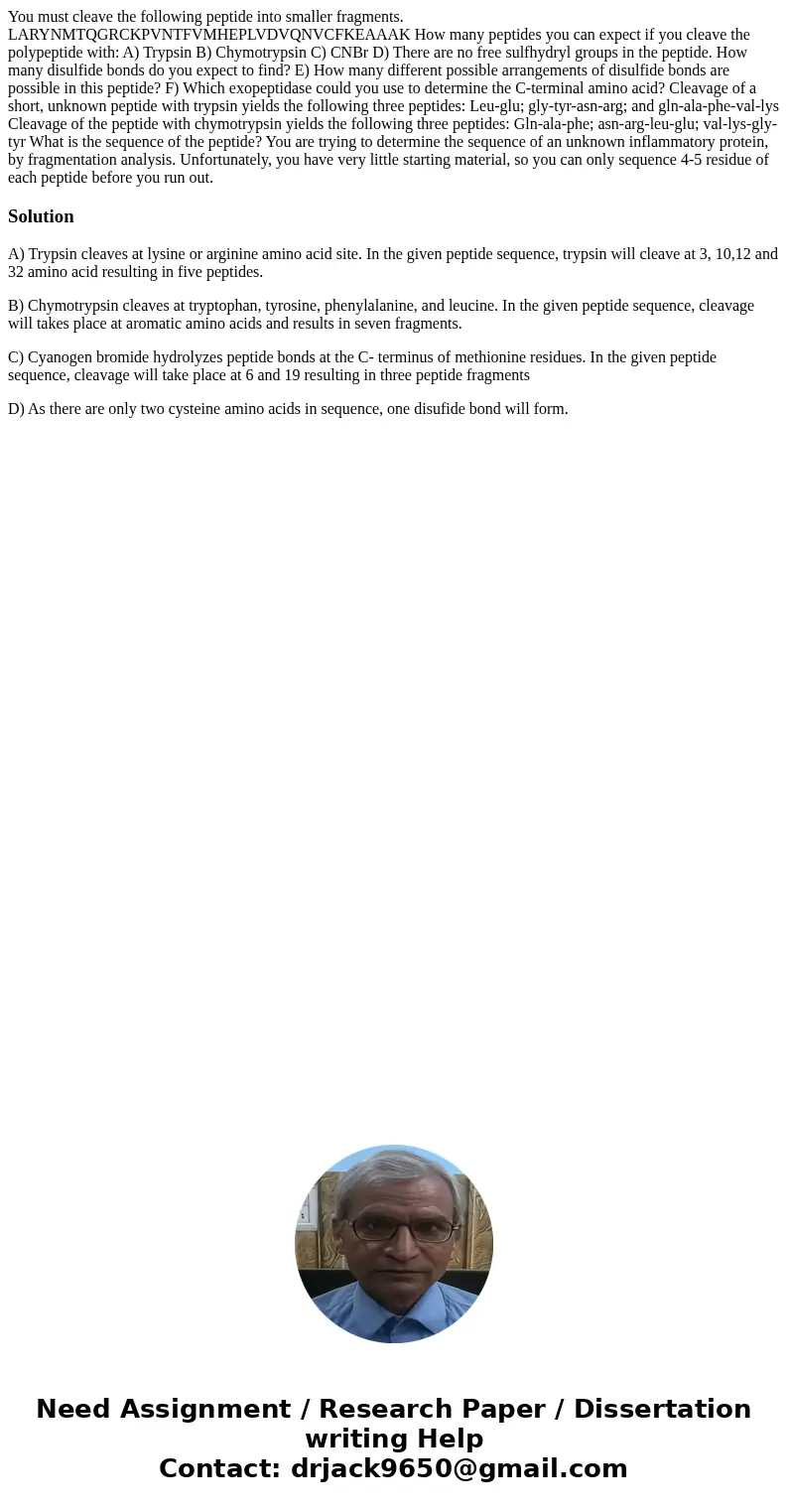You must cleave the following peptide into smaller fragments
You must cleave the following peptide into smaller fragments. LARYNMTQGRCKPVNTFVMHEPLVDVQNVCFKEAAAK How many peptides you can expect if you cleave the polypeptide with: A) Trypsin B) Chymotrypsin C) CNBr D) There are no free sulfhydryl groups in the peptide. How many disulfide bonds do you expect to find? E) How many different possible arrangements of disulfide bonds are possible in this peptide? F) Which exopeptidase could you use to determine the C-terminal amino acid? Cleavage of a short, unknown peptide with trypsin yields the following three peptides: Leu-glu; gly-tyr-asn-arg; and gln-ala-phe-val-lys Cleavage of the peptide with chymotrypsin yields the following three peptides: Gln-ala-phe; asn-arg-leu-glu; val-lys-gly-tyr What is the sequence of the peptide? You are trying to determine the sequence of an unknown inflammatory protein, by fragmentation analysis. Unfortunately, you have very little starting material, so you can only sequence 4-5 residue of each peptide before you run out.
Solution
A) Trypsin cleaves at lysine or arginine amino acid site. In the given peptide sequence, trypsin will cleave at 3, 10,12 and 32 amino acid resulting in five peptides.
B) Chymotrypsin cleaves at tryptophan, tyrosine, phenylalanine, and leucine. In the given peptide sequence, cleavage will takes place at aromatic amino acids and results in seven fragments.
C) Cyanogen bromide hydrolyzes peptide bonds at the C- terminus of methionine residues. In the given peptide sequence, cleavage will take place at 6 and 19 resulting in three peptide fragments
D) As there are only two cysteine amino acids in sequence, one disufide bond will form.

 Homework Sourse
Homework Sourse